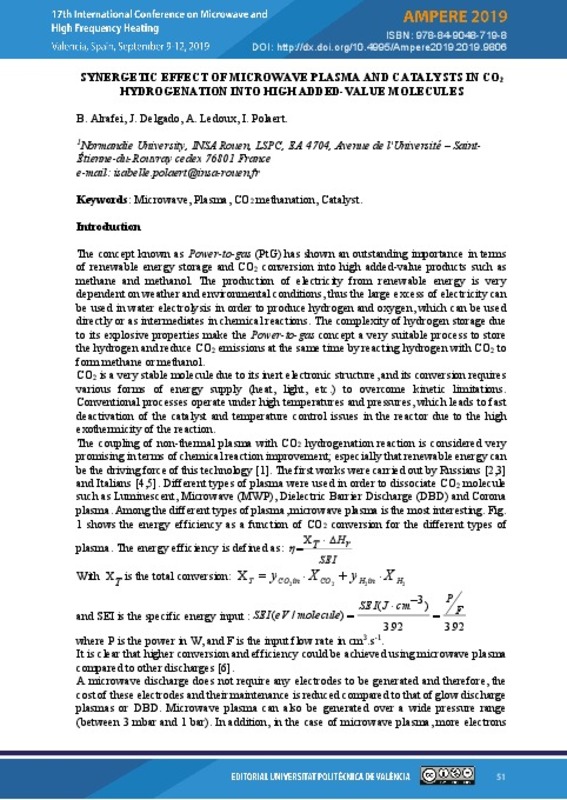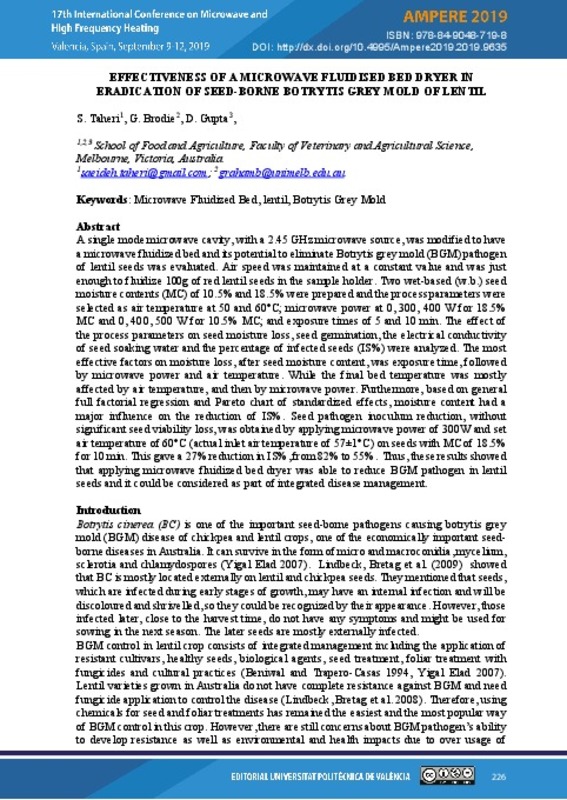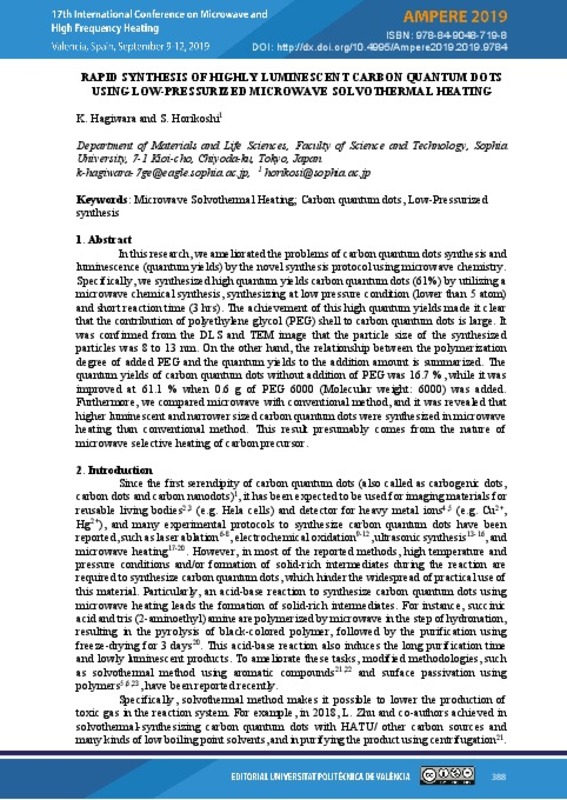JavaScript is disabled for your browser. Some features of this site may not work without it.
Buscar en RiuNet
Listar
Mi cuenta
Estadísticas
Ayuda RiuNet
Admin. UPV
H2-reduction Behavior of FeS-CaO Mixture during Microwave Heating
Mostrar el registro sencillo del ítem
Ficheros en el ítem
| dc.contributor.author | Amini, Ahmadreza
|
es_ES |
| dc.contributor.author | Ohno, Ko-ichiro
|
es_ES |
| dc.contributor.author | Maeda, Takayuki
|
es_ES |
| dc.contributor.author | Kunitomo, Kazuya
|
es_ES |
| dc.contributor.author | Kashimura, Keiichiro
|
es_ES |
| dc.date.accessioned | 2019-11-11T15:50:09Z | |
| dc.date.available | 2019-11-11T15:50:09Z | |
| dc.date.issued | 2019-10-15 | |
| dc.identifier.isbn | 9788490487198 | |
| dc.identifier.uri | http://hdl.handle.net/10251/130738 | |
| dc.description.abstract | [EN] Microwave irradiation is an energy-efficient and a rapid-heating method to decrease the activation energy of chemical reactions via both thermal and non-thermal effects of microwave photons 1). Recently, hydrogen-reduction during microwave heating has been proposed for magnetite reduction to combine the advantages of microwave irradiation and using H2 as a reducing agent during iron production 2). In the present study, as a novel idea, the traditional microwave heating system was equipped with thermobalance to investigate the kinetics of H2-reduction of FeS-CaO mixture (FeS(s) + CaO(s) + H2(g) = Fe(s) + CaS(s) + H2O(g)) under microwave heating at 2.45 GHz to further mitigate CO2 emission and prevent SO2 release during iron production from a sulfide mineral. Microscope observations revealed that the un-reacted core model can be employed for such a kinetic study. Linearity (R2) of different rate-controlling mechanisms after a 10-minute reduction reaction demonstrated that the gas diffusion in micropores of reduced metallic Fe is a dominant rate-controlling mechanism while the interfacial chemical reaction is progressed rapidly. This is attributed to extraordinary effects of microwave irradiation on speeding up the chemical reactions 3), while the formation of Fe shell on the surface of FeS/FeO particles decreases the accessibility of gas to un-reacted parts, resulting in a lower rate of gas diffusion in micropores. Moreover, the diffusion coefficients (De) at 460, 570, and 750 °C were calculated from the plot of the gas diffusion, as illustrated in Fig. 1, wherein the X is reduction degree: where Wi (g) is the initial weight of the sample, Wt (g) is the weight of the sample after treatment for t seconds, Wht (g) is the weight change of the sample owing to the dehydration reaction, and WO (-) is the stoichiometric weight ratio of oxygen in the sample, which is 0.111. Consequently, the activation energy of 22.3 kJ.mol-1 was attained from the Arrhenius equation for the hydrogen-reduction reaction of FeS-CaO mixture under microwave heating. | es_ES |
| dc.format.extent | 8 | es_ES |
| dc.language | Inglés | es_ES |
| dc.publisher | Editorial Universitat Politècnica de València | es_ES |
| dc.relation.ispartof | AMPERE 2019. 17th International Conference on Microwave and High Frequency Heating | es_ES |
| dc.rights | Reconocimiento - No comercial - Sin obra derivada (by-nc-nd) | es_ES |
| dc.subject | Energy Production by Microwaves | es_ES |
| dc.subject | Microwave CVD | es_ES |
| dc.subject | EM Modelling | es_ES |
| dc.subject | Microwave Material interaction | es_ES |
| dc.subject | Dielectric Properties | es_ES |
| dc.subject | Dielectric Properties Measurement | es_ES |
| dc.subject | Solid State Microwave | es_ES |
| dc.subject | Microwave Processing | es_ES |
| dc.subject | Microwave Chemistry | es_ES |
| dc.subject | Microwave applicators design | es_ES |
| dc.title | H2-reduction Behavior of FeS-CaO Mixture during Microwave Heating | es_ES |
| dc.type | Capítulo de libro | es_ES |
| dc.type | Comunicación en congreso | es_ES |
| dc.identifier.doi | 10.4995/AMPERE2019.2019.9755 | |
| dc.rights.accessRights | Abierto | es_ES |
| dc.description.bibliographicCitation | Amini, A.; Ohno, K.; Maeda, T.; Kunitomo, K.; Kashimura, K. (2019). H2-reduction Behavior of FeS-CaO Mixture during Microwave Heating. En AMPERE 2019. 17th International Conference on Microwave and High Frequency Heating. Editorial Universitat Politècnica de València. 357-364. https://doi.org/10.4995/AMPERE2019.2019.9755 | es_ES |
| dc.description.accrualMethod | OCS | es_ES |
| dc.relation.conferencename | Ampere 2019 | es_ES |
| dc.relation.conferencedate | Septiembre 09-12,2019 | es_ES |
| dc.relation.conferenceplace | Valencia, Spain | es_ES |
| dc.relation.publisherversion | http://ocs.editorial.upv.es/index.php/AMPERE2019/AMPERE2019/paper/view/9755 | es_ES |
| dc.description.upvformatpinicio | 357 | es_ES |
| dc.description.upvformatpfin | 364 | es_ES |
| dc.type.version | info:eu-repo/semantics/publishedVersion | es_ES |
| dc.relation.pasarela | OCS\9755 | es_ES |
Este ítem aparece en la(s) siguiente(s) colección(ones)
-
Ampere 2019 [66]











